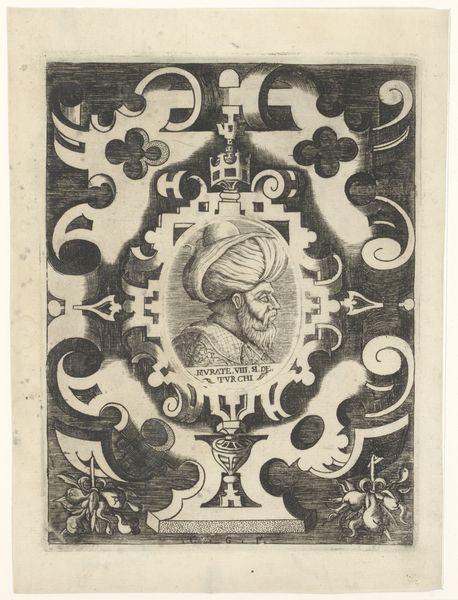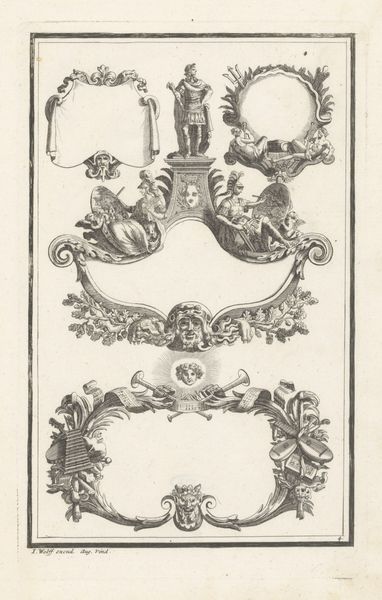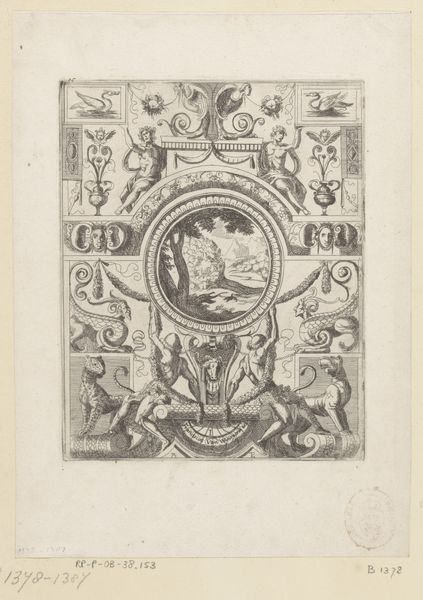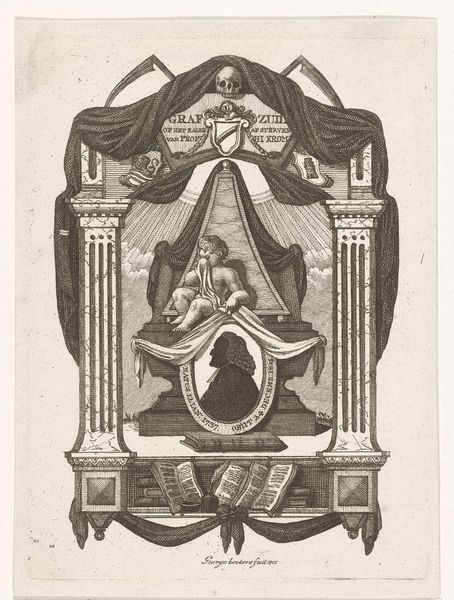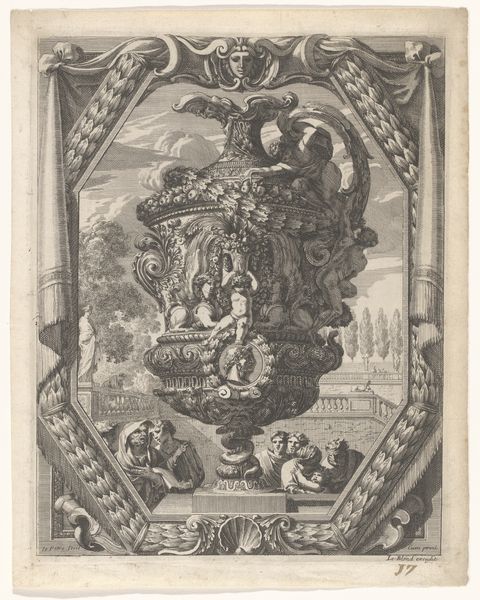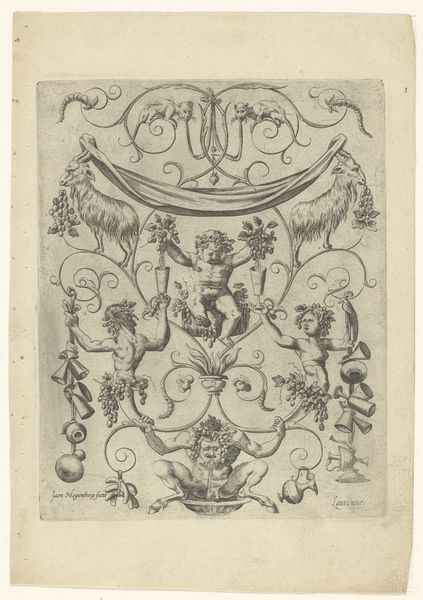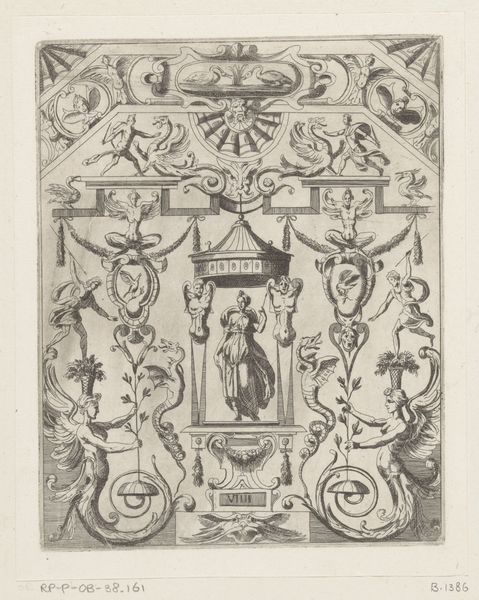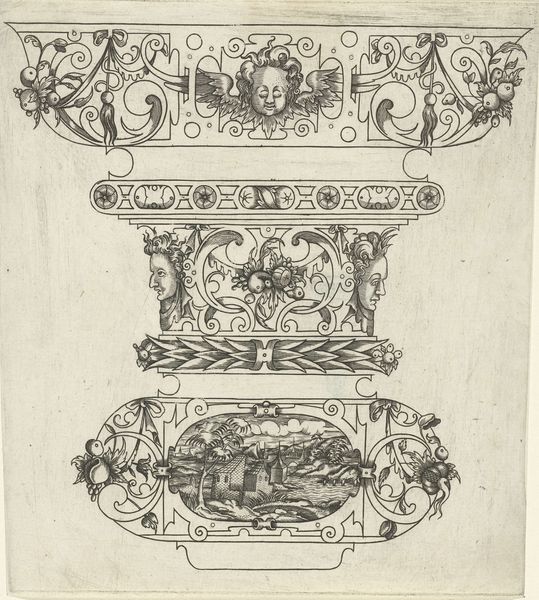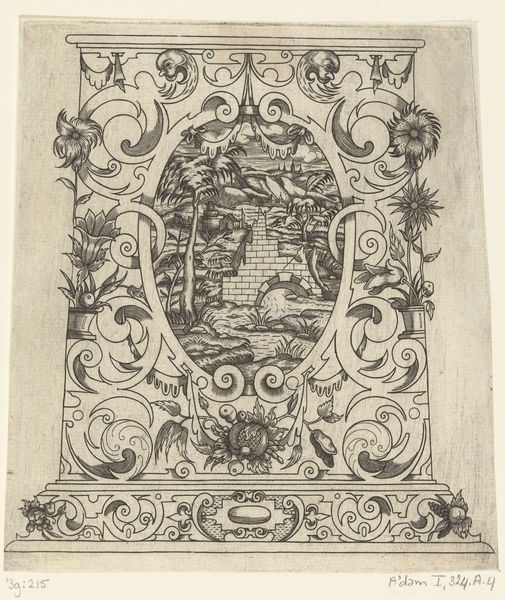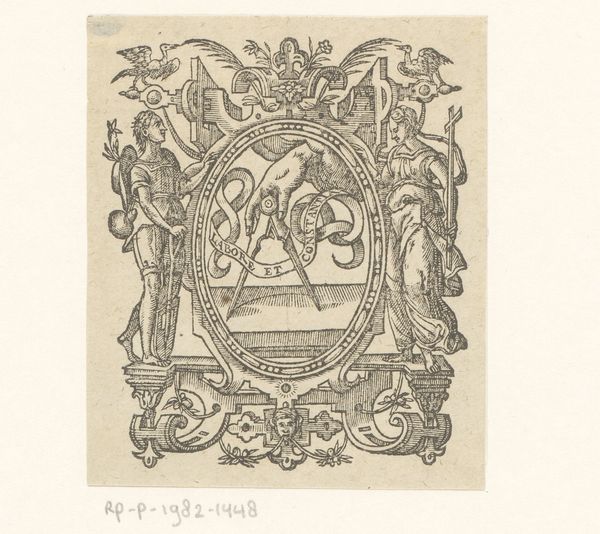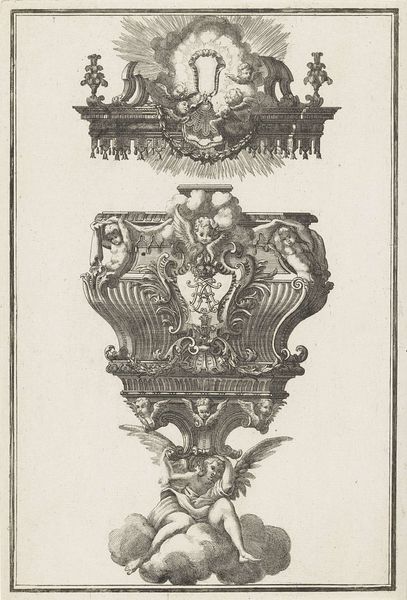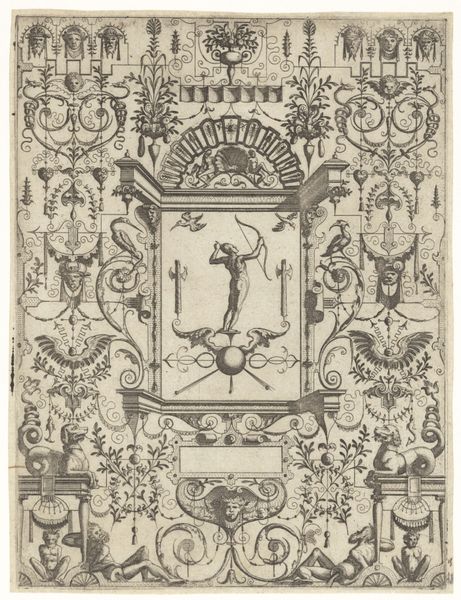
print, ink, engraving
#
baroque
# print
#
pen sketch
#
old engraving style
#
landscape
#
ink
#
pen-ink sketch
#
pen work
#
cityscape
#
engraving
Dimensions: height 144 mm, width 128 mm
Copyright: Rijks Museum: Open Domain
Curator: This ink engraving, crafted in 1681, presents a bird’s eye view titled "Gezicht op de proosdij Wettenhausen" or "View of Wettenhausen Abbey," made by Johann Eckhard Löffler. Editor: It strikes me as extraordinarily formal, rigid almost, even with the flourishes of the frame. Look at the symmetry; the building, and surrounding gardens depicted with such crisp, deliberate lines. There's a severe order here. Curator: The Baroque period favoured such dynamic tension between order and embellishment. Note how the frame itself, replete with cherubic figure, contrasts with the implied severity of monastic life inside. That duality of structure and ornamentation seems integral. Editor: Indeed, the Abbey’s placement suggests not only architectural precision but also a theological principle of perfect balance and harmony between Heaven and Earth. Observe how the artist frames it with symbols; the angel up above is connected with an inscription "Ad Ordine Decus", "Decorum through Order." The image becomes a carefully constructed visual emblem. Curator: Semiotically, the building reads as the primary signifier; a rigidly geometric and controlled form imposed upon a wilder, less disciplined nature. Consider how the grid pattern and rigid geometry are contrasted with the softness of the foliage. Editor: Speaking of, the repetitive designs of those garden plots, so neatly ordered – could they perhaps symbolise both the productive capacity and disciplined lives of the canonesses, who lived and worked at the Imperial Abbey of Wettenhausen? A kind of visual praise through depiction? Curator: An insightful connection, absolutely. Through Löffler's compositional choices – the angle of observation, the framing elements, the sharp rendering – we receive both descriptive information about the site itself and gain entrance into understanding period perspectives on sacred architecture and the integration of institution within landscape. Editor: So, this piece isn’t merely an image; it’s a cultural encapsulation rendered through considered form and embellished, yet potent, iconography. Curator: Precisely. We have engaged, it seems, beyond the architectural into realm of symbol and concept itself. Editor: It certainly elevates the work beyond documentation.
Comments
No comments
Be the first to comment and join the conversation on the ultimate creative platform.
